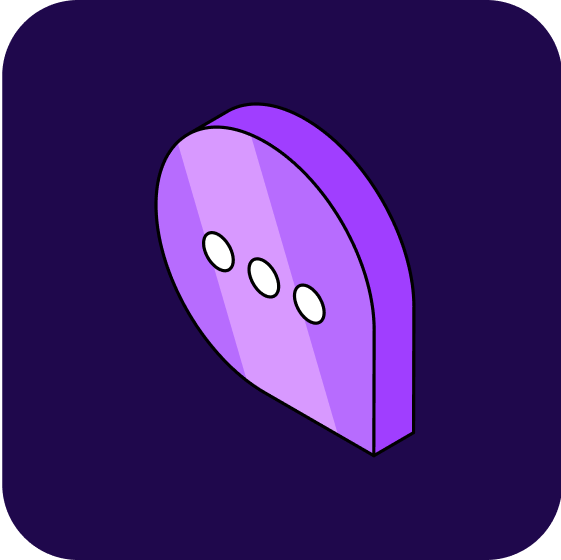What are push notifications?
Push notifications are a feature that sends a message to a user’s mobile device to alert them of new content, messages, or in-app activity.
Unlike in-app messages, push notifications appear on the mobile device's home screen. They are powerful tools for businesses, allowing them to deliver essential information and encourage engagement even when the user isn’t active in the app.
They can be sent to almost any device and are typically accompanied by a sound or a vibration to accompany the persistent banner on the home screen.
To receive push notifications from a business, users must agree to receive notifications at onboarding. It’s important to use push notifications selectively, as receiving excessive notifications can frustrate users and drive them to deactivate notifications in the app settings menu.
Push notifications are an essential component of your omnichannel messaging strategy. Push notifications are a critical addition to SMS notifications.
Benefits of push notifications
Real-time communications: Push notifications are delivered instantly to users' home screens, allowing for timely communication even if users aren’t using the app.
Improved engagement: Notifications help to keep apps top of mind with users, sparking engagement around relevant content, messages, or other in-app activity.
Enhanced user experience: Users appreciate the ability to stay informed about relevant in-app happenings with a quick glance at their home screen.
Timely information: Notifications are an effective channel for distributing important news, updates, announcements, promotions, and more.
Use cases for push notifications
Customer support: When integrated with support platforms, push notifications can send triggered notifications to users about support information and contact options.
Marketing: Push notifications are critical to in-app marketing, allowing businesses to suggest new products, remind users of abandoned carts, and personalize notifications to users based on preferences and app usage.
Sales: Transactional notifications help users stay informed about the status of deliveries, shipping updates, and payment receipts.
Onboarding: Push notifications can guide users through onboard flows, features, and functionality to help promote customer success and retention.
User-generated content: Notifications can prompt users to provide feedback about products or experiences in moments of success, helping to garner positive reviews and ratings for a business and its app.
How industries use push notifications
Healthcare: Notifications can inform patients about upcoming appointments, routine checkups, policy changes, and collect feedback about care providers and experiences after a visit.
Retail: Notifications are a personalized channel through which retailers can promote new products, timely offers, re-engagement campaigns, send cart abandonment reminders, and more.
Social apps: Notifications inform users in real time about new messages, friend requests, comments, mentions, shares, and other in-app activity.
Financial services: FinTech apps use push notifications to notify users of policy updates, account deposits, suspicious activity, and other relevant information.
On-demand services: Ride sharing, food delivery, and other service apps use Notifications to deliver high-visibility updates about service, such as driver location, and promote offers at peak service times to stay top of mind.
Key features of push notifications
Personalization: Integration with CRM or marketing platforms allows you to personalize notifications based on user preferences, in-app behavior, and demographics to ensure content resonates with users.
Rich media: Images, GIFs, videos, and other rich media appear as thumbnails in Push Notifications, improving visual appeal and encouraging user action.
Deep linking: Including links to specific content or app locations helps ensure that users take the desired action seamlessly.
Localization: It’s important to tailor notifications to the native language of your target audience and adjust content to resonate with users from different cultures.
Opt-in required: Push notifications can only be delivered if users opt to receive them, so it’s best to reinforce the value of receiving notifications at onboarding flow and throughout your in-app messaging strategy.
Push notifications are an important tool for keeping users informed and engaged. It’s important to use push notifications judiciously, as receiving excessive notifications can frustrate users and dampen engagement. For best results, craft a push notification strategy that enhances the value of your app before you start messaging.

Try Sendbird
Build your in-app communications without the challenge.

